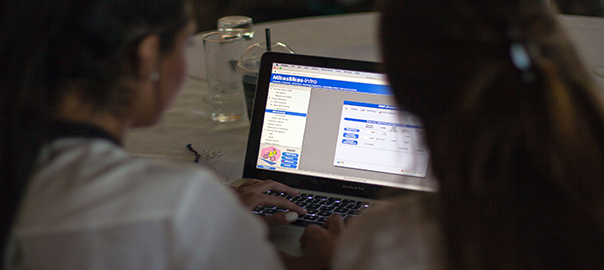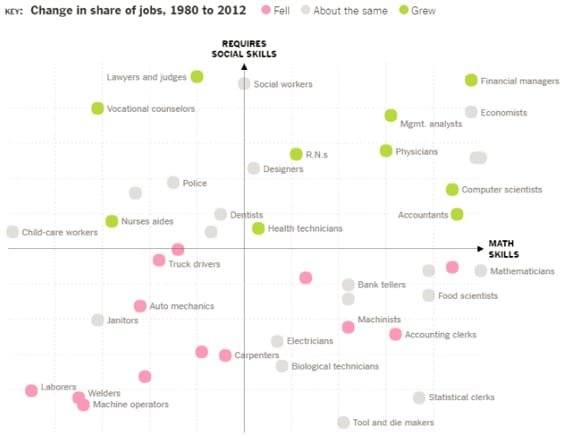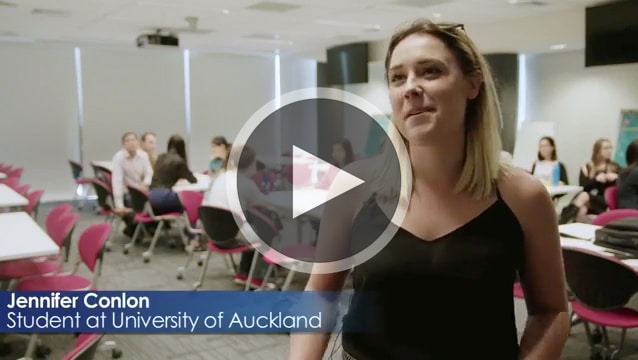The article below is written by Daniel McCarty, an instructor currently using MikesBikes Introduction within his course at St. Clair Community College.
Background
Here in the U.S., community colleges offer the first two years of a traditional four-year degree. They are fairly local in their appeal, and offer significant convenience and cost savings vs. proceeding directly to four year colleges. The degree we offer is a two-year Associates of Science or Liberal Arts (AAS) degree. Or students may simply choose to transfer without completing the AAS degree.
Challenges
U.S. community colleges are OPEN ADMISSION, which means that we accept all students, regardless of GPA, test scores or aptitude. Our students range from the brilliant candidate for admission to University of Michigan in year three, to the high school drop-out or students with significant learning and behavioral challenges. Math and writing are often particularly difficult challenges with the latter students. We offer remedial, non-college credit courses for students not yet performing at the freshman level, but there are still “gaps” in their learning.
The Capstone Course
The open admission policy does not mean we lower our standards at community colleges. We expect them to be performing at the college sophomore level by the time they leave our campus. To confirm that, we have a variety of testing protocols. In business, which I teach, we offer what is called a Capstone course, entitled Critical Thinking in Business. It is taken in the final term of their two-year degree and has several prerequisites: marketing, management and accounting. The capstone course is designed to demonstrate competency in critical thinking, using all the classes they have taken during their two year stay at the college. The course is built around two main components – the case study and business simulations. For case studies, we use Harvard School of Business short cases, the exact same cases used for their program. For the business simulation, I use Smarstims’ MikesBikes Introduction.
Why I use MikesBikes Introduction
I should say that I am not a career-long academic. I am a former President/CEO of several multi-billion dollar companies, including some Fortune 500 firms at the President level. I retired after thirty years in the corporate world and chose teaching in my small, struggling hometown so I could pass along some of the things I have learned in the business world.
I believe MikesBikes Introduction is the most realistic business simulation I have ever encountered. I use it because it reminds me of my business career and the things I did every day on the job. I consider it an excellent preparation for either a career or further academic studies.
How I use MikesBikes Introduction
I find that I need to make some modifications to the Smartsims methodology to accommodate my students. While they have all had accounting, management and marketing, their retention is often not what it should be. I find myself having to revisit the basics of the financial statements. My focus is not on how they prepared, but rather how to read the reports and see the “story” behind the numbers.

Here are the “tricks” I use to make MikesBikes Introduction friendlier to average community college students:
1. I run the class as an eight-week simulation
There are two reasons I cut it down to eight weeks:
- Their learning starts to drop off at that point and we get into repetitive situations. Community college students’ strategic moves are often focused on more basic business concepts; you won’t find the advanced tactics you might see in a four-year environment.
- Because of the differences in abilities among students, the simulation becomes a bit of a “blow out” and it is often a kindness for some teams to end it after eight weeks. I try to minimize this by mixing excellent students with challenged students, but it happens anyway.
I find that students are taught how to prepare financial statements in accounting classes, the focus is not how to interpret them, with the intention of deciding their next tactical move in the marketplace. MikesBikes adds this element to their education, but I find I must prepare them for it. We go over financial statements on sites like Yahoo Finance and we discuss whether the numbers point to a positive or negative outlook for the future. Often, we do not have the time or detailed financial data to determine the root causes of every number we see, but we can certainly make a list of things we would want to question about the data.
2. I show the class the teacher’s version of the data summaries.
My students are not advanced enough to benefit from the confidentiality of data. They need to learn from other student’s mistakes. They need to understand which firms are cash strapped and the moves they might make to recover from their cash position. They can also understand why their strategies did not work. For example, if they implemented a price decline along with a modest quality decline, they will find that this would not translate to an increase in sales (most especially if a segment is sensitive to quality). It helps to see that another team took the same price decline, but chose to maintain their quality. That helps them understand their strategies are only as good as their assumptions about what their competition will do. I also give general advice in the form of basic business “lessons learned”. I find that giving up the confidentiality is well worth the learning we get from everybody’s good and bad moves. They really do not have the sophistication level to take advantage of the data like they might at an Ivy League school.
3. Finally, my lectures are totally built around the data for the week.
I never know what my lecture is going to be until turnover day. Then I must quickly write a lecture on the topics that are reflected in the results. For example, the importance of accurate forecasting might be a subject driven by the results. Another example might be the importance of trying to maintain margins while investing in the business. Another topic I find that students rarely take full advantage of are the financial moves – buying back stock, paying dividends—because of a lack of comfort in that area. They also make the common mistake on sitting on way too much cash when there are business investments to be made. Everybody makes good moves and bad, and I use ALL their moves as a teachable moment for the rest of the class.
Conclusion
My students will never make the MikesBikes Introduction Hall of Fame, but that is not the point. They learn how to read financial reports, how to use those financial reports to develop a “picture” of what is happening in the marketplace, they learn to make business decisions that are data-driven and they learn how to recover from the inevitable bad decision or unexpected competitive activity they will surely encounter during the game.
It is a wonderful learning experience. I strongly endorse it for students of all ability levels. The simulation can be adjusted to the skill set of the class. And EVERYONE enjoys the competitive nature of the assignment and enjoys bragging rights when they are on top of the heap for the week.

Dan McCarty has worked his way up from entry level marketing assistant to President and CEO of multi-billion dollar companies and divisions of companies. Dan has managed America’s best known brands including Del Monte, Quilted Northern, Underwood, Crystal, Dixie Cups and Plates, Brawny Paper Towels, Accent, Hain Health Foods and more. Dan is also a MBA graduate from the prestigious Haas School of Business at the University of California in Berkeley. (Source: UDemy)














